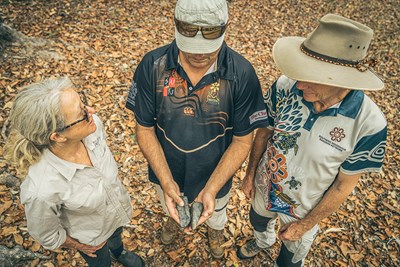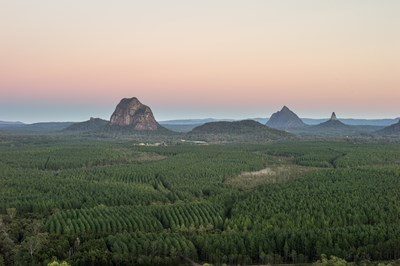Our past, present and future
We are committed to protecting this history and identity of Indigenous and non-indigenous cultural heritage within our plantation forests to maintain bonds from the past, in the present and into the future.
We recognise that cultural heritage includes tangible and intangible culture as well as natural heritage, from historic buildings and artefacts to significant landscapes, traditions, values and even language or knowledge inherited from past generations.
 With a history of more than 100 years of forest management and tens of thousands of years of continuous Indigenous connection to Country before and after these forests were planted, preserving cultural heritage is an important aspect of our responsible forest management practices. We have developed a standard for the management of cultural heritage which includes:
With a history of more than 100 years of forest management and tens of thousands of years of continuous Indigenous connection to Country before and after these forests were planted, preserving cultural heritage is an important aspect of our responsible forest management practices. We have developed a standard for the management of cultural heritage which includes:
- incorporating a risk assessment for cultural heritage sites into operational plans
- training our people in the primary identification of cultural heritage sites
- engaging with relevant stakeholders where cultural heritage sites are identified.
 Indigenous cultural heritage
Indigenous cultural heritage
The Aboriginal Cultural Heritage Act 2003 was enacted to protect Queensland’s Aboriginal cultural heritage. It establishes a duty of care for organisations like ours to avoid adversely affecting Indigenous cultural heritage during land management activities. This includes consultation with Indigenous parties where there is risk of harm to cultural heritage.
Our company standard for cultural heritage outlines the procedures we follow when dealing with Indigenous cultural heritage. Where sites are known to exist, or may exist, we will consult with the relevant Indigenous party in accordance with these procedures.
Non-indigenous cultural heritage
 In accordance with the Queensland Heritage Act 1992, we have a duty of care to protect important cultural heritage sites. The Queensland Heritage Register is a list of places, trees, natural formations and buildings of cultural heritage significance. A searchable version of the register is available online, and we maintain an up-to-date version of the register as a GIS layer to be consulted during the development of operational plans.
In accordance with the Queensland Heritage Act 1992, we have a duty of care to protect important cultural heritage sites. The Queensland Heritage Register is a list of places, trees, natural formations and buildings of cultural heritage significance. A searchable version of the register is available online, and we maintain an up-to-date version of the register as a GIS layer to be consulted during the development of operational plans.
We assess the importance of non-indigenous heritage values on a regional basis with reference to relevant studies and forest planning instruments, and support the protection of important natural heritage and cultural, religious, spiritual and social heritage values, including consultation with local historians. Examples include the recognition and protection of historic homesteads and grave sites.
